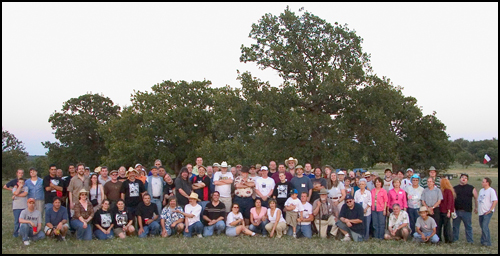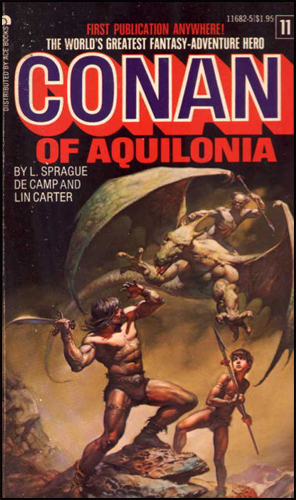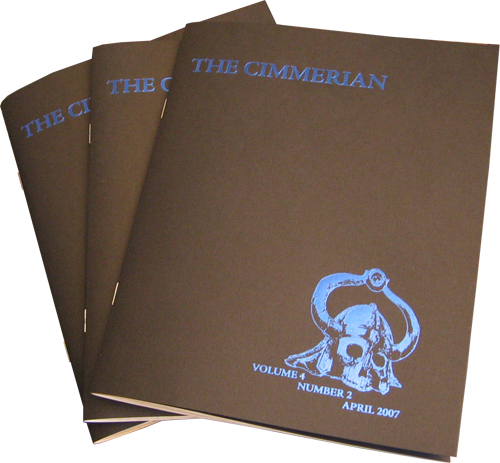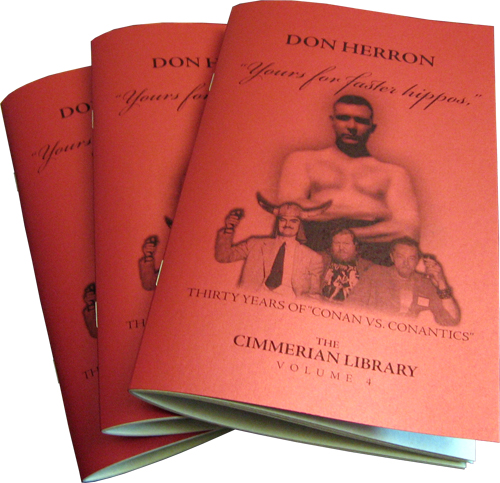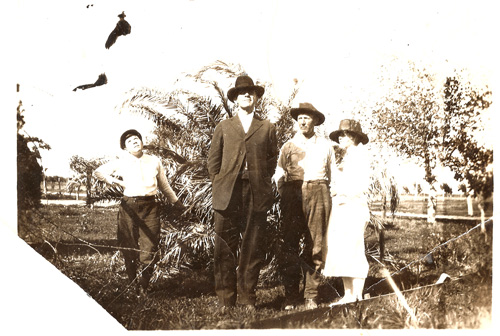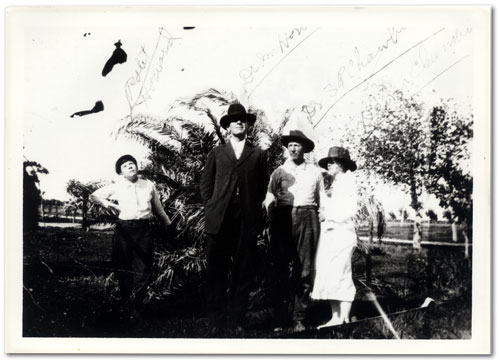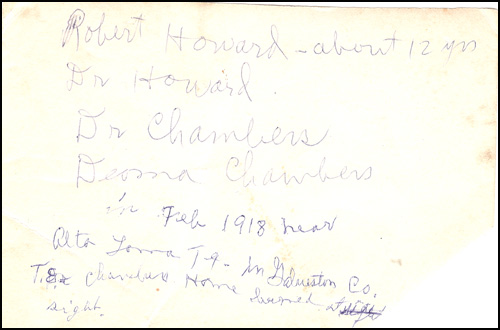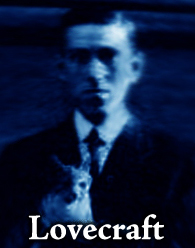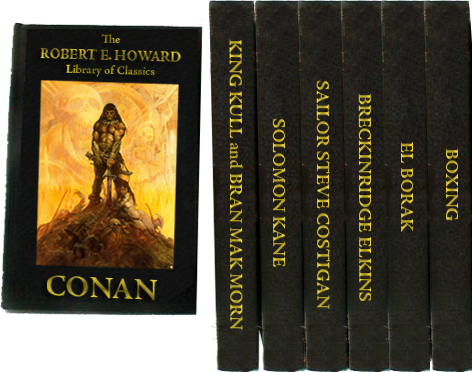
Rob’s clarifications in his Breckinridge Elkins post helped me nail down what Breck books to get and why — but also have me dwelling somewhat sullenly on what I call The Great Tragedy of REH Publishing. Howard scholars have all the texts and pulp tearsheets necessary to put together a complete uniform collection of REH. Howard fans have literally grown old and died waiting for this stuff. And yet decade after decade goes by without this happening. Why?
Primarily, the reasons are legal. I’ve been privy to all sorts of behind-the-scenes conversations and correspondence between the editors and publishers of Howard, going back many decades. At every turn, worthy ideas and projects are stymied by convoluted contracts between various parties, all warring over their claim to Howard’s work. Publisher #1 can’t print a Complete This because two of the stories have been licensed to Publisher #2 for an Incomplete That.
Then there are the editorial decisions. Things like how to design your book, what cover and font to use, how to edit it, what front matter and appendices to include. This series of books had pure texts — but died from lack of funds. That series of books didn’t die — but the texts were substandard. Almost without fail, every attempt to make a nice set of Howard material has been marred by poor decision-making.
Most of my colleagues in this field think I’m just being picky and a spoil-sport, but I am far from alone in these criticisms. I was perusing a copy of the new issue of Black Gate magazine the other day, which contains among much else an illuminating review of Del Rey’s Bran Mak Morn: The Last King. The reviewer, Jackson Kuhl, is a fantasy fan who is not a member of the Howardian inner circle of scholars, collectors, and admirers. To us insiders, of course, Bran is a major Howard hero, period. As such, any book that gives us every story and fragment along with the kitchen sink is a good thing. But listen to Kuhl’s gripes:
The Last King…holds only brief excitement for those simply desirous of pulp adventure. The book comprises a mishmash of Howardania…here’s the kicker: of the seven complete stories, only three actually feature Bran Mak Morn. The shadow of the character looms over a fourth but he never appears onstage. A $16 for the volume, that’s four bucks a pop…the editors can only work with what Howard produced. Yet the decision to dedicate an entire omnibus to a character in three (perhaps four) finished stories is strange — a move suitable for Wandering Star’s collector’s series, maybe, but not for a general audience TPB. All four could have been easily inserted within a broader collection of barbarian tales (like Wandering Star’s own The Ultimate Triumph).
Kuhl ends with the assessment that, “Readers hungry for sword-&-sorcery will find The Last King more gristle than meat.” Elsewhere in the review he does go out of his way to repeat what we all think: that getting some pure texts into print is a notable and worthy achievement. But when you have fervent fantasy fans like Kuhl — who you would think are the perfect target audience for Del Rey’s Howard books — leveling such pointed criticism at a volume containing some of Howard’s very best work, something is wrong. How many other fans have dutifully purchased these Wandering Star/Del Rey releases, growing more frustrated not only at the meat-to-gristle ratio, but at the repetition of stories among different books? By the time the two-volume Best of REH is released this year, some of the stories will have been republished no less than three separate times in this series. At what point does a fan — a general reader shelling out real money — get sick of paying for the same stories, or for hundreds of pages of incomplete material and editorializing they don’t care about?
It’s not just fans who are rebelling. As editor of The Cimmerian I get a lot of mail from guys who rank among the most passionate Howard collectors in the world, but who are not public figures in Howard fandom. It is hard to overestimate the rage they feel at Wandering Star for promising them a set of Deluxe books but then leaving them high and dry. Pure text fans paid in many cases $500-$1000 for their copy of The Savage Tales of Solomon Kane, only to later discover that the book actually contains several impure and uncorrected stories. Even ten years later, none of the people involved have released an errata sheet of any kind, adding insult to injury. First edition collectors, meanwhile, looked past this gaffe only to be stunned when — after shelling out $200 each for the first two Conan volumes — the third appeared first from Del Rey as a trade paperback, making that the true first edition, and destroying the first-edition collectability of the Wandering Star volumes. When in V3n11 a Cimmerian reader informed us that while on vacation in Spain he saw a complete set of the WS Conans put out by a Spanish publisher, in Deluxe slipcased editions with all the trimmings, and much cheaper than the WS volumes, it was the cherry on the cake of the American collectors’ nightmare. Hablamos Espanol, amigos?
Scholars should be tossed into this boiling pot as well. Word on the street is that much talk at the Windy City Pulp Convention was dedicated to grumbling about how outrageously bad the first REH Foundation release was. Those who managed to swallow their pride and shell out upwards of $50 (including shipping) for the volume — despite recoiling from the wildly inappropriate Little Red Riding Hood cover — received a tome of disheartening thinness, with poems set against absurdly inept margins that had text running into the middle of the book and leaving vast expanses of white space on the page edge. Didn’t anyone print a test copy, for Pete’s sake? Fifty bucks, gone — and now word is out that another poetry book titled Selected Poems is being released this year, doubtless for another $50 all told. With the first being so anemic, could not the two have been combined? Or better yet, how about releasing The Complete Poems of REH for $50? I know of many Howard fans who find themselves unable to justify buying these books or joining the Foundation due to these problems, myself among them.
All of the above, then, stems from legal issues combined with bad business and editorial decisions, and to this day it has Howard publishing in a stranglehold. I’m convinced that a 95%-99.9% pure REH set could be collected and published over, say, a year. A set containing all the stories, all the poems, all the letters, and then several appendix volumes of fragments, incomplete stories, non-fiction, juvenilia, and other miscellany. A uniform set of hardcovers, with good solid production values. Texts could be restored to eliminate political correctness when we know of it, as in the Breck books Rob wrote of, but production would not be held up for years waiting for original typescripts to surface — the “perfect” would not be allowed to become the enemy of the “good.” As Cimmerian readers learned in V2n2 and V2n3, the Bison series has its share of minor typos, true — but that five-volume series is uniform, elegant, and packed to the gills with solid REH material. What I would give for a similarly imperfect but Pretty Damn Good extension of that set including the rest of Howard’s work.
If I had carte blanche to make my own set, what exactly would it look like? Hard to say for sure until such time as I do it, but I have some general guidelines in mind. Big, full-sized, uniform hardcovers. Big, elegant, readable font. Ribbon bookmark sewn in. Acid-free paper. Black boards with gold-impressed text. No dustjackets, but with paintings pressed into the front cover. Slipcases that actually fit the book comfortably, unlike the maddening too-tight ones that came with the Wandering Star Bran Mak Morn: The Last King.
Covers would be Frazetta paintings for the Conan volumes and for as many of the others as would make sense, and classy photos of REH on the Letters and Poetry volumes. Inside there will be no art, no essays, no footnotes. Just brief introductions giving the reader a bit of context, and maps when necessary in the text or as fold-outs glued onto the back boards, like Tolkien publishers have done for so many years.
Stories would be published only once, and the main volumes would contain only complete stories, arranged for maximum reader impact, not according to some artificial or pedantic chronology. These books would be designed to really wow the Jackson Kuhls of the world, the people who come to REH to read his stories — what a concept. Characters with enough material would get their own volumes, while lesser characters and genres would be combined in various ways.
Incomplete, fragmentary, or otherwise marginal material would be reserved for a set of Appendix volumes at the rear of the set. In the case of poetry, in the main set there would be a big Poetry of Robert E. Howard volume containing only what I judge to be his best verse, the stuff that is to poetry what Conan was to prose. Later, in the Appendix volumes, his more marginal poems — limericks, juvenilia, etc. — would be collected separately, or left to be found in the letters in which they appeared. That way I could hand someone the poetry book without being embarrassed at all the crap mixed in with the gems.
All of my idle brainstorming might produce a set that looks like this, with each subject taking up as many volumes as needed:
MAIN SET
Conan
Kull/Bran
Solomon Kane
Sailor Steve Costigan
Breckinridge Elkins
El Borak
Boxing
Westerns
Horror
Historical Adventure
Fantasy Adventure
Modern Adventure
Poems
Letters
____________________
APPENDICES
Juvenilia
Non-Fiction
Miscellany
Drafts
Doubtless there would be a thousand little tweaks to make along the way, but this is a set I would love to own and read. And once something like this is collected and formatted, it wouldn’t be difficult to update the texts for each new printing as better versions are discovered, or to repackage various volumes as meaty and fan-friendly mass market or trade papers, or to extricate certain tales for Best Of or Penguin Classics and Library of America type books. The trick is to do the best job you can, but to complete such a set, now, come hell or high water, even if it means publishing some stories that will surely be corrected in various ways once the typescripts are found and analyzed.
Tolkien publishing has done this for years, putting out the same books in edition after edition, in a variety of different deluxe and mass market formats, with each one more or less improving on the last. At no point did people go crazy over the many, many typos or errors to be found in these books. Lord of the Rings and company were popular, errors and all — the basic achievement was there for all to see and appreciate, crystal clear. It’s the same with REH: of course it’s nice to get more pure whenever possible, but it would be far nicer to have all of his work in a uniform set of hardcovers. When I think of the hundreds of thousands of dollars sunk into the Wandering Star series, with most of the money being spent not on Howard’s words but on goatskin covers, and high-priced comic book art, and specially made paper, and dozens of pages given not to Howard’s words but to the writing of others, I sigh with regret at what could have been. A fraction of that money handed over to a professional editor who knows how to quickly assemble books and get them proofed, and a fraction more dedicated to good solid printing and marketing, and the Robert E. Howard Library of Classics would have been complete and in the hands of fans long ago.
I’ve accepted that this state of affairs is not likely to change in my lifetime, not until everything Howard ever wrote is available in the public domain sometime around 2050. Only then will some enterprising fan who is a true bookman be able to assemble a complete and professional set of Howard’s work, along the way making the proper decisions and creating something special for those of us who primarily value Howard’s words, without obsessing over unattainable perfection. Since I won’t be alive to see that day, I suppose that I’ll end up engaging in a bit of private bookmaking one of these years, to create a personal, one-of-a-kind set. It will sit on my shelf for my enjoyment alone, and thus at long last, a least in one little corner of the world, the Great Tragedy of REH Publishing will become history.
